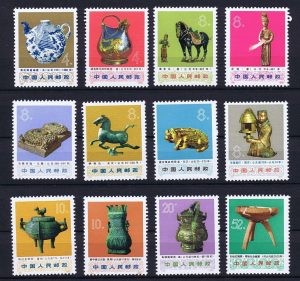
Maximizing Your Sales with Pipedrive Email Marketing
Maximizing Your Sales with Pipedrive Email Marketing As a business owner, you are constantly looking for ways to maximize your sales and grow your customer
The Legacy of Paul Rand: A Pioneer of Modern Graphic Design
Paul Rand is a name that every graphic designer knows and reveres. Considered a pioneer of modern graphic design, he is best known for his iconic logos and corporate identities that have graced everything from IBM to UPS. He brought clean, elegant lines to branding and design, and his work continues to inspire designers today. In this article, we will delve into Paul Rand’s life, his design philosophy, and his contributions to the world of graphic design.
Early Life and Education:
Paul Rand was born in Brooklyn in 1914 as Peretz Rosenbaum. He grew up in a family of Orthodox Jews and took an interest in art at a young age. He attended the Pratt Institute in Brooklyn, graduating with a degree in advertising design. After completing his studies, he worked briefly for a few advertising agencies before embarking on a freelance career in design.
Design Philosophy:
Paul Rand’s design philosophy was simple: create something that is visually pleasing and tells a story. He believed that a design should convey a message with a few simple lines and shapes. He was a master of minimalism, using negative space to create shapes and designs that were both simple and memorable.
One of his most famous quotes sums up his philosophy: “Design is the silent ambassador of your brand.” Rand believed that design was a powerful tool for helping companies communicate their values and build brand recognition. His logos for companies like IBM, ABC, and UPS are still instantly recognizable today.
Contributions to Graphic Design:
Paul Rand was one of the first designers to bring a modernist approach to graphic design. He rejected the ornate, flowery styles of the past and embraced simplicity and minimalism. He used bold, sans-serif fonts and clean, geometric shapes to create logos that were both simple and memorable.
In addition to his logos and corporate identities, Rand also designed book covers, posters, and advertisements. His work was exhibited in galleries across the world, and he was awarded numerous awards for his contributions to graphic design.
Legacy:
Paul Rand died in 1996, but his legacy lives on in his designs and the principles he espoused. His work remains an inspiration to graphic designers around the world, and his influence can be seen in everything from corporate logos to book covers.
In an age where design is increasingly important to businesses and individuals alike, Paul Rand’s legacy is more relevant than ever. He showed us that good design can help communicate a message and build a successful brand. His approach to design, with its focus on simplicity and minimalism, continues to inspire and inform artists and designers today.
Conclusion:
Paul Rand was a pioneer of modern graphic design, whose legacy continues to inspire and influence designers around the world. His approach to design, with its emphasis on minimalism and simplicity, changed the way we think about branding and corporate identity. From his iconic logos to his book covers and advertisements, Rand’s work remains an inspiration to designers today.
FAQs:
1. What was Paul Rand’s design philosophy?
Paul Rand believed that a design should be visually pleasing and tell a story. He embraced minimalism and used negative space to create simple, memorable designs.
2. What are some of Paul Rand’s most famous logos?
Paul Rand designed logos for many well-known companies, including IBM, ABC, and UPS.
3. What was Paul Rand’s legacy?
Paul Rand’s legacy is his contribution to modern graphic design. He was a pioneer of minimalism and simplicity, and his designs continue to inspire and influence designers today.
4. What was Paul Rand’s educational background?
Paul Rand attended the Pratt Institute in Brooklyn, graduating with a degree in advertising design.
5. How did Paul Rand’s approach to design change the industry?
Paul Rand’s emphasis on minimalism and simplicity changed the way designers thought about branding and corporate identity. He showed us that good design can help communicate a message and build a successful brand.

Maximizing Your Sales with Pipedrive Email Marketing As a business owner, you are constantly looking for ways to maximize your sales and grow your customer

Title: Key Roles in a High-Performing Marketing Team As the world of marketing becomes more complex, companies are realizing the importance of having a high-performing

Email marketing is a crucial aspect of any business’s digital marketing campaign. But with so many options and strategies out there, it can be challenging

Talk with us!
Do you have a project in mind? Send us a message to understand how we can help you. We will get in touch with you.